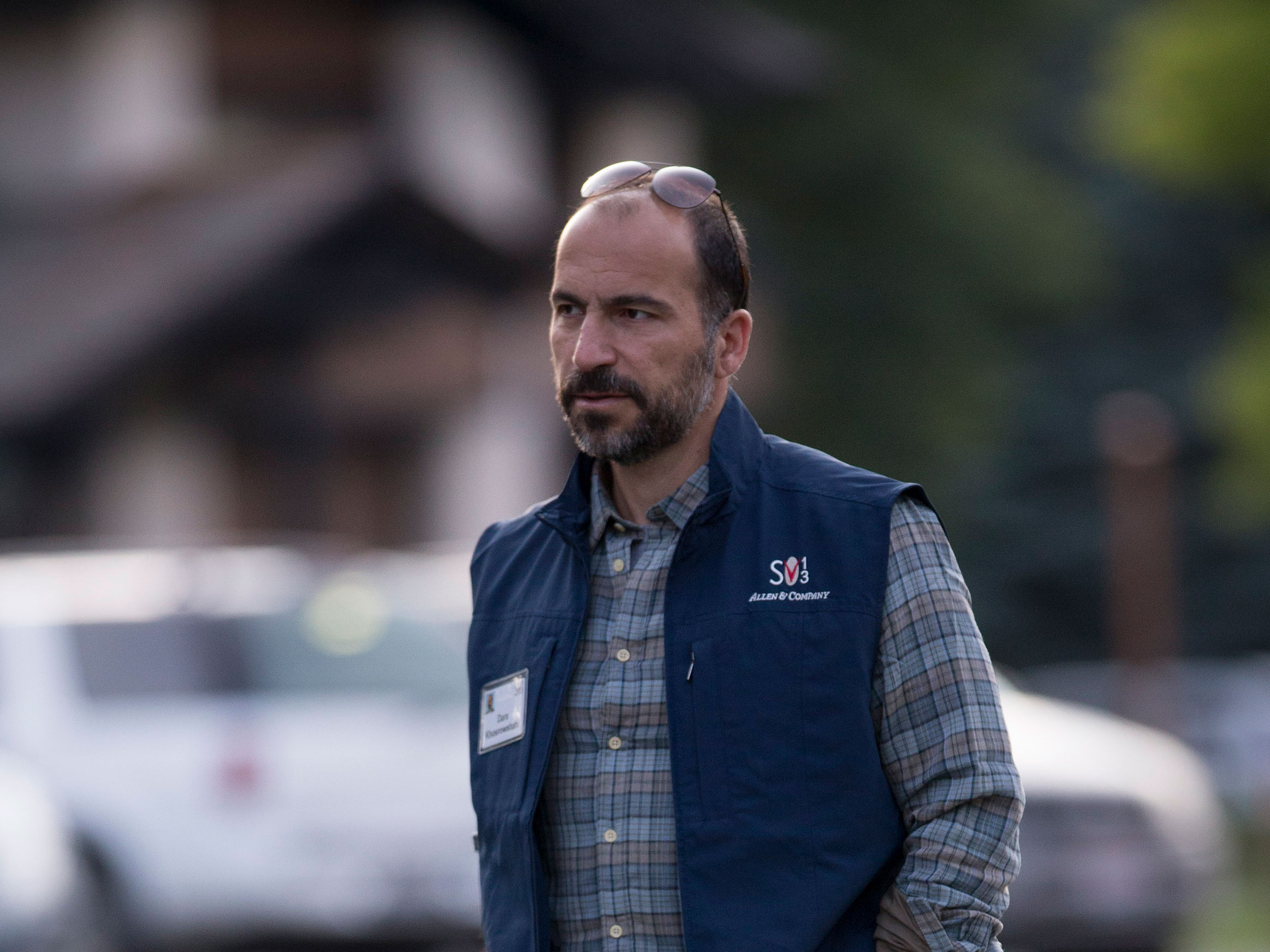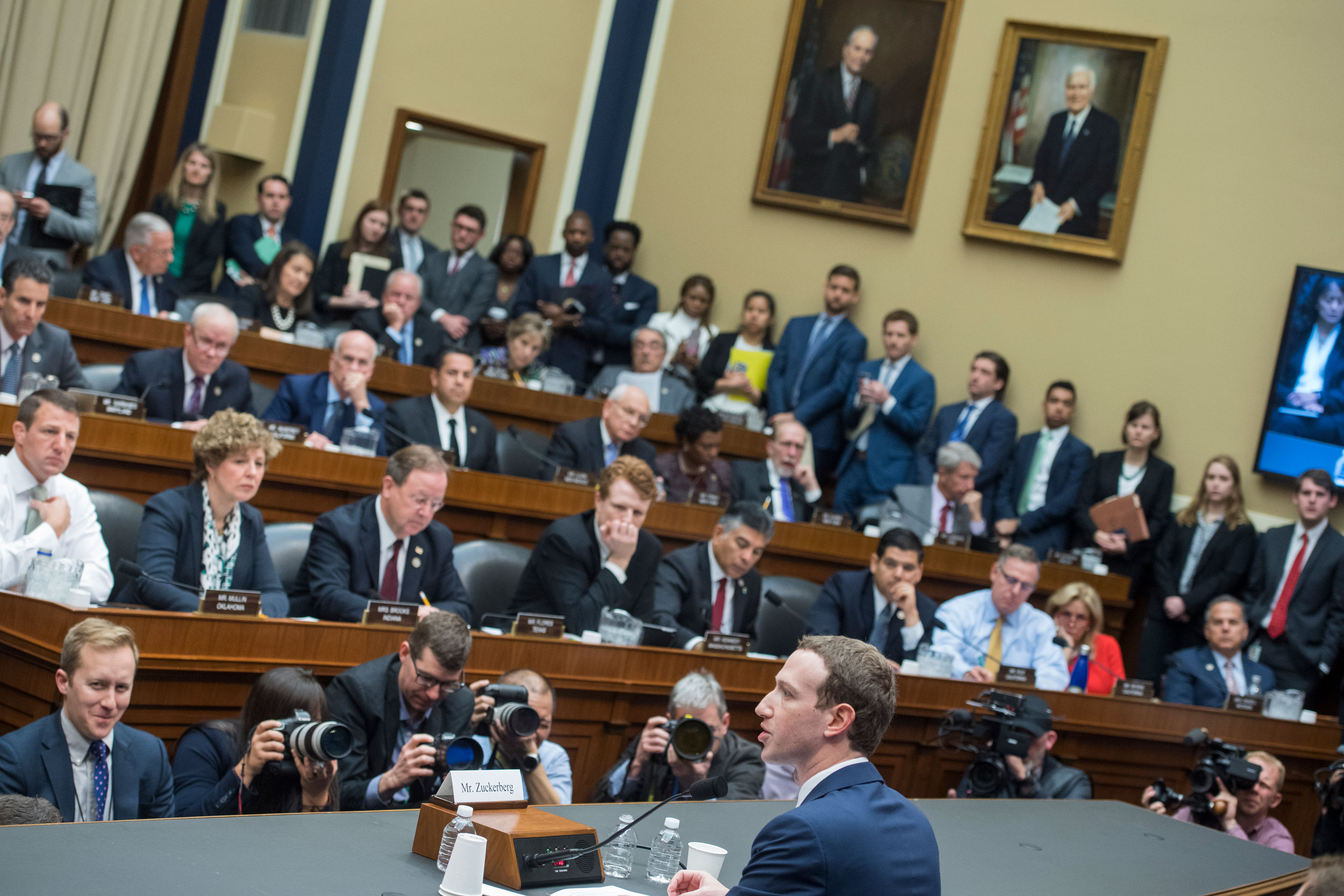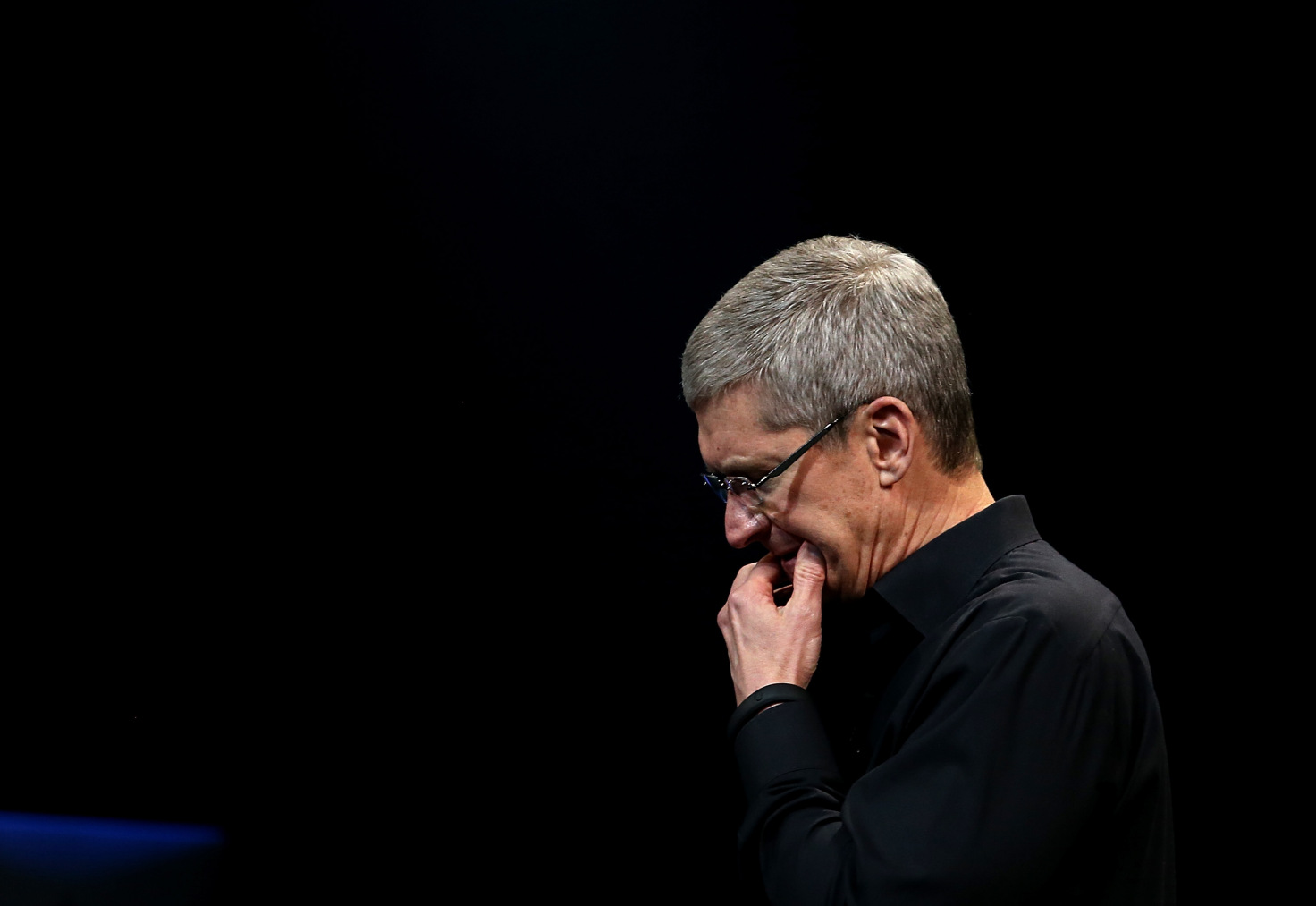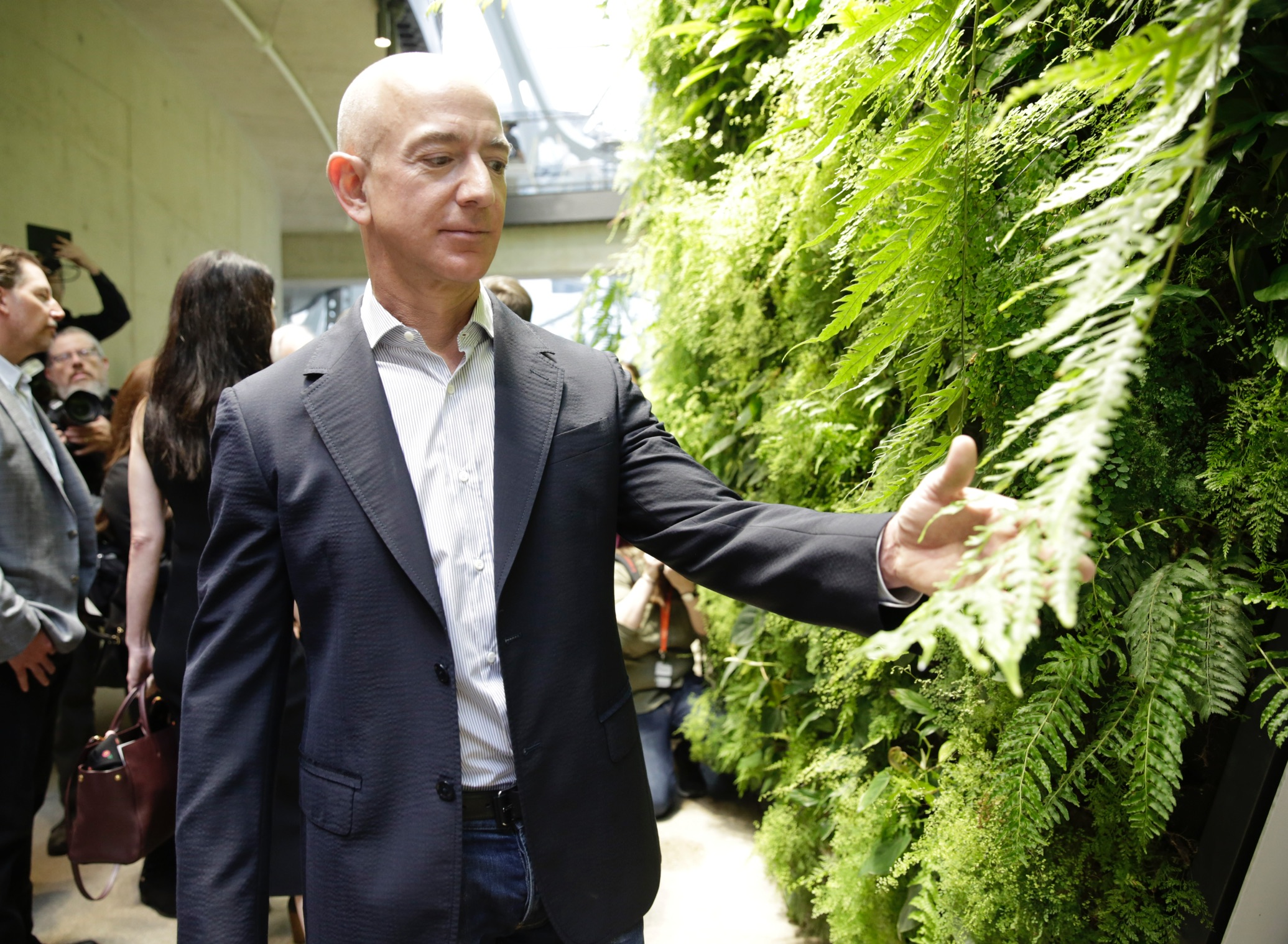domingo, 30 de diciembre de 2018
lunes, 24 de diciembre de 2018
Silicon Valley’s year of reckoning
Tech companies have always branded themselves as the good guys. But 2018 was the year that the long-held belief that Silicon Valley is on the right side of progress and all things good was called into question by a critical mass.
As startups grow bigger and richer, amassing more power and influence outside of the Valley, a reckoning has played out in government and business. Mission statements like “connecting the world” and “don’t be evil” no longer hold water.
A look at a few of this year’s most impactful news themes underscore why; we’ve racked up too many examples to the contrary.
Android co-creator Andy Rubin’s $90 million payout and sexual misconduct revealed
Since the #MeToo movement opened the floodgates on the importance of fighting for gender equality and fair treatment of women and underrepresented minorities at a large scale, the tech industry was rightfully singled out as a microcosm for rampant misconduct.
In October, a New York Times investigation detailed how Android co-creator Andy Rubin was paid out a $90 million exit package when he left Google in 2014. At the time, Google concealed that the executive had multiple relationships with Google staffers and that credible accounts of sexual misconduct had been filed against him during his time at the company. It was an all-too-familiar story recounting how women in tech aren’t safe at work and misbehaved executives are immune from penalty. Google employees didn’t stand for it.
At a rally in San Francisco, Google staffers read off their list of demands, which included an end to forced arbitration in cases of harassment and discrimination, a commitment to end pay and opportunity inequity, and a clear, inclusive process for reporting sexual misconduct safely and anonymously, reported Kate Clark.
Rubin has since taken leave from his smartphone company, Essential.
The first self-driving car fatality occurred when an Uber SUV struck and killed a woman in Arizona

Dara Khosrowshahi, chief executive officer of Uber, arrives for a morning session at the Allen & Co. Media and Technology Conference in Sun Valley, Idaho, U.S., on Wednesday, July 10. Photographer: Scott Eells/Bloomberg via Getty Images
In March, the first self-driving car fatality occurred in Tempe, Arizona when 49-year-old pedestrian Elaine Herzberg was struck by an Uber autonomous test SUV. The car was in self-driving mode, and there was a safety driver behind the wheel who failed to intervene.
Investigators determined the driver had looked down at a phone 204 times during a 43-minute test drive, and that the driver was streaming “The Voice”on Hulu, according to a police report released by the Tempe Police Department. Law enforcement determined her eyes were off the road for 3.67 miles of the 11.8 total miles driven, or about 31 percent of the time.
Uber paused all of its AV testing operations in Pittsburgh, Toronto, San Francisco and Phoenix as a result, and released a safety report detailing how it will add precautions to its testing of self-driving cars. Two employees will be required to sit in the front seat at all times, and an automatic braking system will be enabled.
The incident immediately raised questions about about insurance and liability, along with the investigation from the National Transportation Safety Board. As mobility companies charge full speed ahead in developing solutions that will shape the future of urban transportation, tragedies like this remind us that while AVs and humans share the roads, these programs are rife with risk. Has Uber learned a lesson? We’ll find out soon, as the company received permission by the state of Pennsylvania to resume autonomous vehicle testing.
Jamal Khashoggi was assassinated by Saudi agents, prompting Silicon Valley to think about how it got so rich

JIM WATSON/AFP/Getty Images
Silicon Valley companies are used to getting away with a lot. Larger orgs like Uber, Tesla and Facebook rotate in and out of the hot seat as security breaches wreak havoc and sexual harassment scandals are exposed, only to be washed out of the news cycle by a viral image of Elon Musk sampling marijuana the next day.
But one story shocked the public for weeks, after agents of the Saudi government assassinated Washington Post columnist Jamal Khashoggi at the Saudi Arabian consulate in Istanbul as he was trying to obtain marriage license papers.
The tech industry was collectively upset by its proximity to a government and funding source that blatantly misused its power. Silicon Valley gets most of its money through SoftBank’s Vision Fund and by proxy the Saudi kingdom. About half of SoftBank’s massive $93 billion tech-focused fund is powered by a $45 billion commitment from the Saudi kingdom. This means the total invested by the kingdom alone into U.S. startups is far greater than the total raised by any single VC fund. Did we see a single example of a startup that refused to work with SoftBank in the aftermath? No. Will we? Probably not. Because Silicon Valley players are mostly only political and activist when it’s convenient for them.
Silicon Valley companies who’ve accepted money from this source have a vested interest in keeping the peace with Saudi Arabia and its Crown Prince Mohammed bin Salman – the leader known for getting friendly with tech CEOs in the past. But where does this leave us now as Saudi Arabian money continues to distort American venture? SoftBank has sustained countless startups with round after round of funding as it plunges into debt.
With SoftBank money inflating round sizes and therefore valuations, tech founders and CEOs are faced with the age-old question of whether or not it’s okay to use dirty money to do “good things.” SoftBank’s 2018 culminated in a record IPO that saw a 15 percent drop in value on its debut. Regardless, the aftermath of the Khashoggi assassination could signify the end of an era in American venture if founders begin to think critically about the source of their funding – and act on it.
Facebook’s struggle

UNITED STATES – APRIL 11: Facebook CEO Mark Zuckerberg testifies before a House Energy and Commerce Committee in Rayburn Building on the protection of user data on April 11, 2018. (Photo By Tom Williams/CQ Roll Call)
Facebook’s 2018 kicked off with Zuckerberg’s wishful, vague post about his personal challenge to “fix Facebook.” The social network bowed out of 2017 with critics saying Zuckerberg hadn’t done enough to combat the proliferation of fake news on Facebook or block Russian interference in the 2016 U.S. election. Online abuse had never been so bad. All of this was happening just as people started to realize that mindlessly browsing the newsfeed – Facebook’s core product – is a total waste of time.
What better timing for not one, but two massive security scandals?
Zuckerberg answered to Congress after Facebook was infiltrated by Cambridge Analytica, a data organization with ties to the Trump administration. In the beginning of 2014, the organization obtained data on 50 million Facebook users in a way that deceived both the users and Facebook itself.
If that weren’t enough, just months later Facebook revealed at least 30 million users’ data were confirmed to be at risk after attackers exploited a vulnerability allowing them access to users’ personal data. Zuckerberg said that the attackers were using Facebook developer APIs to obtain information, like “name, gender, and hometowns” linked to a user’s profile page. Queue #deleteFacebook.
A Pew report detailed how Facebook users are becoming more cautious and critical, but they still can’t quit. News and social networking are like oil and water — they can’t blend into coexistence on the same news feed. In 2018, Facebook was caught in a perfect storm. Users started to understand Facebook for what it actually is: powered by algorithms that coalesce fact, opinion and malicious fake content on a platform designed to financially profit off the addictive tendencies of its users. The silver lining is that as people become more cautious and critical of Facebook, the market is readying itself for a new, better social network to be designed off the pioneering mistakes of its predecessors.
Apple hits a $1 trillion market cap and celebrates the anniversary of the iPhone with design changes

SAN FRANCISCO, CA – OCTOBER 22: Apple CEO Tim Cook speaks during an Apple announcement. (Photo by Justin Sullivan/Getty Images)
This was a hardware-heavy year for Apple. The MacBook Air got Retina Display. The Apple Watch got a big redesign. The iPad Pro said farewell to the home button. We met the new mac Mini and an updated Apple Pencil. In September, Apple held its annual hardware event in Cupertino to announce three new iPhone models, the XS (the normal one), XR (the cheap one) and the XS Max (the big one). We also learned that the company went back to the drawing board on the Mac Pro.
In August, Apple won the race to $1 trillion in market cap. It wasn’t the frayed cords or crappy keyboards that boosted the company past this milestone, but rather price hikes in its already high-margin iPhone sales. But while Apple remains wildly profitable, growth is slowing notably.
Tech stocks took a beating toward the end of the year, and although Apple seems to have weathered the storm better than most companies, it may have reached a threshold for how much it can innovate on its high-end hardware. It may be wise for the company to focus on other methods of bringing in revenue like Apple Music and iCloud if it wants to shoot for the $2 trillion market cap.
As the biggest, richest companies get bigger and richer, questions about antitrust and regulation rise to ensure they don’t hold too much economic power. Tim Cook has more authority than many political leaders. Let’s hope he uses it for good.
Tesla CEO Elon Musk sued by the SEC for securities fraud

CHICAGO, IL – JUNE 14: Engineer and tech entrepreneur Elon Musk of The Boring Company listens as Chicago Mayor Rahm Emanuel talks about constructing a high speed transit tunnel at Block 37 during a news conference on June 14, 2018 in Chicago, Illinois. Musk said he could create a 16-passenger vehicle to operate on a high-speed rail system that could get travelers to and from downtown Chicago and O’hare International Airport under twenty minutes, at speeds of over 100 miles per hour. (Photo by Joshua Lott/Getty Images)
In August, Tesla CEO Elon Musk announced in a tweet heard around the internet that he was considering taking Tesla private for $420 per share and that he’d secured funding to do so. The questioning started. Was it legit? Was it a marijuana joke? The tweet caused Tesla’s stock price to jump by more than 6 percent on August 7. Musk also complained that being a public company “subjects Tesla to constant defamatory attacks by the short-selling community, resulting in great harm to our valuable brand.”
Turns out, Musk had indeed met with representatives from the Saudi sovereign wealth fund, and that the fund’s lead rep told Musk that they’d bought about 5 percent of Tesla’s stock at a stake worth $2 billion, were interested in taking the company private and confirmed that this rep had the power to make these kinds of investment decisions for the fund. However nothing was written on paper, and Musk did not notify the Nasdaq – an important requirement.
At the end of September, the SEC filed a lawsuit against Musk for securities fraud in regards to his “false and misleading” tweets, seeking to remove him from Tesla. Musk settled with the SEC two days after being charged, resigning from his chairman position but remaining CEO. Musk and Tesla were also ordered to pay separate $20 million fines to “be distributed to harmed investors under a court-approved process,” according to the SEC.
Public companies are supposed to value the interests of their shareholders. Pulling the trigger on an impulsive tweet breaks that trust – and in Musk’s case, cost $40 million and a board seat. This is why we should never put too much fear or faith in our leaders. Musk is brilliant and his inventions are changing the world. But he is human and humans are flawed and the Tesla board should have done more to balance power at the top.
The great Amazon HQ2 swindle

Chief Executive Officer of Amazon, Jeff Bezos, tours the facility at the grand opening of the Amazon Spheres, in Seattle, Washington on January 29, 2018.
Amazon opened its new Seattle office space which looks more like a rainforest. The company created the Spheres Complex to help spark employee creativity. (Photo: JASON REDMOND/AFP/Getty Images)
Tech jobs bring new wealth to cities. Amazon set out on a roadshow across America in what the company described as a search for its second headquarters, or “HQ2.” The physical presence of Amazon’s massive retail and cloud businesses would undoubtedly bring wealth, innovation, jobs and investment into a region.
There was initial hope that the retail giant would choose a city in the American heartland, serving as a catalyst for job growth in a burgeoning tech hub like Columbus, Ohio, Detroit, Mich., or Birmingham, Ala. But in the end, Amazon split the decision between two locations: New York (Long Island City) and Arlington, Virginia, as the sites for its new offices. The response? Outrage.
Jon Shieber noted that cities opened their books to the company to prove their viability as a second home for the retailing giant. In return, Amazon reaped data on urban and exurban centers that it could use to develop the next wave of its white-collar office space, and more than $2 billion worth of tax breaks from the cities that it will eventually call home for its new offices.
Danny Crichton argued that Amazon did exactly what it should have with its HQ2 process. Crichton wrote that Amazon is its own entity and therefore has ownership of its decisions. It allowed cities to apply and provide information on why they might be the best location for its new headquarters. Maybe the company ignored all of the applications. Maybe it was a ploy to collect data. Maybe it wanted publicity. Regardless, it allowed input into a decision it has complete and exclusive control over.
Let’s hope that in 2019, Silicon Valley will hold on to some of its ethos as a venture funded sandbox for brilliant entrepreneurs who want to upend antiquated industries with proprietary tech inventions. But let it be known that sleeping at the wheel while your company gets breached, turning a blind eye to the evildoings of your largest funding sources and executive immunity from sexual misconduct violations no longer have their place here.
from TechCrunch https://tcrn.ch/2EIXQki
via IFTTT
domingo, 23 de diciembre de 2018
HQ Trivia launches HQ Words tonight under reinstalled CEO
HQ’s expansion beyond trivia emerges from beta tonight, but the question is whether it’s different and accessible enough to revive the startup’s growth. HQ Words opens to everyone with today’s 6:30pm pacific broadcast within the HQ Trivia app after several weeks of closed beta testing of the Wheel Of Fortune-style game. The launch will be the first big move of Rus Yusupov now that’s been officially renamed CEO a week after the tragic death of fellow co-founder and former CEO Colin Kroll, HQ confirms to TechCrunch.
 “Intermedia Labs introduced the world to a category defining product, HQ Trivia. Once again, with HQ Words, Intermedia Labs is poised to captivate the world with a revolutionary experience that will bring people together in new ways around live mobile video” Yusupov tells us. “HQ Words is the most interactive experience we’ve ever made.”
“Intermedia Labs introduced the world to a category defining product, HQ Trivia. Once again, with HQ Words, Intermedia Labs is poised to captivate the world with a revolutionary experience that will bring people together in new ways around live mobile video” Yusupov tells us. “HQ Words is the most interactive experience we’ve ever made.”
Kroll’s passing comes at a tough time for HQ. Its daily player count has declined since it became a phenomenon a year ago. The novelty has begun to wear off, and with so many experienced trivia whizzes, cash jackpots are often split between enough people that winners only get a few bucks. Interrupting your days or nights to play at a particular time can be inconvenient compared to the legions of always-available other games. Yusupov, who was HQ’s CEO until Kroll took over in September, will have to figure out what will attract casual crosswords players and those who flocked to Zynga’s Words With Friends — the kind of disruptive thinking Kroll excelled at.
“Colin and I shared many incredible life moments over the last 7 years. We embarked on an incredible journey co-founding two breakthrough companies together – and the lessons we learned at Vine and HQ will continue to have a big impact on me. Like many relationships, we’ve also had our challenges – but it was during these challenging times that Colin’s kind soul and big heart would truly shine” Yusupov wrote in a statement about his co-founder that was originally published by Digiday in a touching memorial post. Between building Vine and HQ together, the pair have reimagined mobile entertainment, giving millions a chance to show off their wits and creativity. “He had this incredible ability to make everyone feel special. He listened well. He thought deeply. But above all, he cared about people more than work. The driving force behind his innovations was the positive impact they would have on people and world. Colin’s innovations and inventions have changed many people’s lives for the better and will continue to impact the world for years to come.”

HQ Trivia’s co-founder and former CEO Colin Kroll passed away earlier this month
How To Play HQ Words
In HQ Words, players compete live to solve word puzzles by correctly choosing what letters are hidden. You can find the game inside the existing HQ Trivia iOS and Android apps. Host Anna Roisman pluckily provides a clue and then dispenses hints as the 25-second timer for each puzzle counts down. If the clue is “gemstone” and you’re shown “_ _ _ m _ _ _”, you’ll have to tap D, I, A, O, and N in any order. Choose three wrong letters or fail to fill out the words and you lose. You’ll spin a wheel before the game starts to get one letter that’s automatically revealed each round.
Make it through ten rounds and you and other winners get a cut of the cash prize, with the three who solved the puzzles fastest scoring a bigger chunk of the jackpot. The startup earns money through selling you extra lives inside Words, though it will probably feature sponsored games and product placement like Trivia does to pull in marketing dollars. Words will go live daily at 6:30pm pacific after Trivia’s 6:00 game, so you can turn it into HQ hour with family and friends.

HQ Words is much more frenetic than Trivia. Rather than picking a single answer, you have to rapidly tap letters through a combination of educated and uneducated guesses. That means it really does feel more interactive since you’re not sitting for minutes with just a sole answer tap to keep you awake. And because it doesn’t require deep and broad trivia knowledge, Words could appeal to a wider audience. The spinner also adds an element of pure luck, as a weaker player who gets to auto-reveal a vowel might fare better than a wiser player who gets stuck with a “Z” like I always seem to.
Fill In The Blank
The concern is that at its core, Words is still quite similar to Trivia. They’re both real-time, elimination round-based knowledge games played against everyone for money. Both at times feel like they use cheap tricks to eliminate you. A recent Words puzzle asked you to name a noisy instrument, but the answer wasn’t “kazoo” but “buzzing kazoo” — something I’m not sure anyone has ever formally called it. Given the faster pace of interaction, even tiny glitches or moments of lag can be enough to make you lose a round. An HQ Words beta game earlier this week failed to show some users the keyboard, causing mass elimination. The pressure to get HQ’s engineering working flawlessly has never been higher.

The phrasing of some HQ Words answers seems like a stretch
HQ originally agreed to let TechCrunch interview Kroll about what makes Words different enough to change the startup’s momentum. Yusupov was supposed to fill in after Kroll was sadly found dead last Friday of an apparent drug overdose. He later declined to talk or provide written responses. That’s understandable during this time of mourning and transition. But HQ will still need to build an answer into its app. Meanwhile, Chinese clones and US competitors have begun co-opting the live video quiz idea. Facebook has even built a game show platform for content makers to create their own.
 HQ could benefit from a better onboarding experience that lets people play a sample game solo to get them hooked and tide them over until the next scheduled broadcast. Mini-games or ways to play along after you’re eliminated could boost total view time and the value of brand sponsorships. A “quiet mode” that silences the between-round chatter and distills HQ to just the questions and puzzles might make it easier to play while multi-tasking. Head-to-head versions of Trivia and Words might help HQ feel more intimate, and there’s an opportunity to integrate peer-to-peer gambling like ProveIt trivia. And branching out beyond knowledge games into more social or arcade-style titles would counter the idea that HQ is just for brainiacs.
HQ could benefit from a better onboarding experience that lets people play a sample game solo to get them hooked and tide them over until the next scheduled broadcast. Mini-games or ways to play along after you’re eliminated could boost total view time and the value of brand sponsorships. A “quiet mode” that silences the between-round chatter and distills HQ to just the questions and puzzles might make it easier to play while multi-tasking. Head-to-head versions of Trivia and Words might help HQ feel more intimate, and there’s an opportunity to integrate peer-to-peer gambling like ProveIt trivia. And branching out beyond knowledge games into more social or arcade-style titles would counter the idea that HQ is just for brainiacs.
Around the height of HQ’s popularity it raised a $15 million funding round at a $100 million valuation. That seems justified given HQ will reportedly earn around $10 million in revenue this year. Gamers are fickle, though, and today’s Fortnite can wind up tomorrow’s Pokemon Go — a flash in the pan that fizzles out. Words is a great bridge to a world outside of Trivia, but HQ must evolve not just iterate.
from TechCrunch https://tcrn.ch/2EL83O1
via IFTTT
jueves, 20 de diciembre de 2018
Cybersecurity and human rights
A cyberattack has the power to paralyze cellular communications; alter or erase information in computerized systems; prevent access to computer servers; and directly harm a country’s economy and security by attacking its electricity networks or banking system.
The necessity is clear for any country, but especially Israel with its unique security considerations, to maintain a cyber defense system. The creation of the unified Israel National Cyber Directorate (INCD), which includes the Israel Cyber Event Readiness Team (CERT-IL), side by side with other security agencies such as the Israeli NSA and Mossad within the Prime Minister’s Office, addresses this need. This is an important institution, and it therefore must have clearly defined legislative powers, goals and organizational structures.
What is interesting, though, is that although Israel is Startup Nation when it comes to innovation and development, it is sorely behind in legislation that deals with the growing dilemmas regarding the intersection between technology, human rights and democratic values. Most technological innovations in security and tracking systems used in social networks are developed out of the public eye. The unified INCD was established before legislation to regulate its activities was put in place.
To this end, the recent publishing of the first draft of a cyber law for Israel, designed to provide a legal framework for the activities of Israel’s cyber defense system, is welcomed. However, the content of the draft shows that the State is seeking to assume far wider powers than are needed to protect the public from cyberattacks. Part of the reason for this is that it is difficult at present to assess what cyberattacks could look like in the future, but another part is what seems to be a somewhat hidden policy of the government to use technology in order to increase their control over citizens’ activities.
According to the draft, the INCD, a division within the Prime Minister’s Office, will be able to routinely collect data from internet and cellular providers, government ministries, local authorities and government corporations in order to identify and thwart cyberattacks in real time. Yet the definition of “security relevant data” remains ambiguous, and is certainly much broader than the definitions laid out in IOC (Cyber Threat Indicator) in the American Cybersecurity Information Sharing Act (CISA) passed in 2015.
The question is whether there is truly a need for all of this information — a record of all online activities and personal details we’ve shared with governmental agencies — to be collected in this way, and whether this is information that could potentially be used to create behavioral profiles that could be used against citizens. What, in effect, is the difference between gathering this data and wide-scale, unrestricted wiretapping? For the State to have access to such far-reaching information constitutes a real threat to citizens’ privacy and human rights on a larger scale.
In addition, should the drafted bill pass, INCD will have access to computers and the authority to collect and process information, all in the name of identifying cybersecurity infiltrators. This could include almost any information held by any private citizen or business. While the law mentions the need to respect the right to privacy, it also permits activities that do not infringe upon this right “more than is necessary” — a frighteningly vague limitation. In addition, there do not seem to be sufficient limits on the use of the information collected. How long can it be stored? Can it be passed from INCD to the police, or to other agencies?
We would not be global leaders in cyber and technology without simultaneously protecting fundamental human rights.
This bill endows the INCD with supreme regulatory powers that supersede those of the police, the Privacy Protection Authorities and others. The INCD even has the capacity to withdraw licenses awarded to commercial institutions. One obvious outcome of this is that it will lead to a lack of cooperation between the different authorities. The million-dollar question is, of course, when do these powers come into play? And the answer, again, is worrying: “Whenever necessary in order to defend a ‘vital interest.'”
This might mean protecting the country’s security or saving human life, but according to the draft, it also includes “the proper functioning of organizations that provide services on a significant scale.” Does this also mean a cyberattack on a large clothing chain? And if so, is this justified?
Classic cybersecurity, as we know it, deals mainly with potential damage to tangible infrastructure. However, the proposed bill allows the prime minister to add more cyberthreats to this list at his will. Which begs the question: What will happen when a prime minister adds something along the lines of “harming the public consciousness by presenting arguments on social networks”? or “disseminating fake news”? Do we really want the INCD to be empowered to deal with such cases in addition to the Israeli NSA?
Moreover, the draft makes scant mention of oversight bodies to regulate the use of such broad powers, and grants the head of INCD the power to maintain a veil of secrecy when attacks are being discovered. It certainly makes sense not to publicize the existence of a cyberattack until it is under control — in order to prevent additional damage — but assume that you are a patient in a hospital in which a cyberattack has created confusion in the administration of medicines. How long would you want this to be kept secret? And what of bank account holders, or people who have registered for a dating site, whose details have been compromised?
The proposed bill endows the INCD with unchecked power, especially when compared with other democracies. The abuse of such power and Edward Snowden’s exposure of PRISM (the NSA’s intrusive surveillance program) should serve as a warning to us all, especially here in Israel. Today, the right to privacy can no longer be seen as the right to control one’s personal data as laid out in the General Data Protection Regulation (GDPR). Rather, the right to privacy is understood as a prerequisite condition for other human rights. While the bill is important, one cannot help but think that it may be the first stage in an unprecedented “big brother” scenario.
Legislators have to take the time to study cyber issues and the threats and opportunities that they pose. It is crucial that those who decide whether or not to pass the bill gain a deep understanding of the meaning of the right to privacy in a digital world. This knowledge will allow them to create a more balanced piece of legislation and in turn protect the rights of Israeli citizens.
The law states that one of its primary goals is to “advance Israel as a global leader in the field of cyber security.” Yet let us not forget that in a small country like Israel, driven by creativity, independence and thinking out-of-the-box, we would not be global leaders in cyber and technology without simultaneously protecting fundamental human rights.
from TechCrunch https://ift.tt/2V1lEpb
via IFTTT
lunes, 17 de diciembre de 2018
New malware pulls its instructions from code hidden in memes posted to Twitter
Security researchers said they’ve found a new kind of malware that takes its instructions from code hidden in memes posted to Twitter.
The malware itself is relatively underwhelming: like most primitive remote access trojans (RATs), the malware quietly infects a vulnerable computer, takes screenshots and pulls other data from the affected system and sends it back to the malware’s command and control server.
What’s interesting is how the malware uses Twitter as an unwilling conduit in communicating with its malicious mothership.
Trend Micro said in a blog post that the malware listens for commands from a Twitter account run by the malware operator. The researchers found two tweets that used steganography to hide “/print” commands in the meme images, which told the malware to take a screenshot of an infected computer. The malware then separately obtains the address where its command and control server is located from a Pastebin post, which directs the malware where to send the screenshots.
10/10 points for creativity, that’s for sure.
The researchers said that memes uploaded to the Twitter page could have included other commands, like “/processos” to retrieve a list of running apps and processes, “/clip” to steal the contents of a user’s clipboard, and “/docs” to retrieve filenames from specific folders.
The malware appears to have first appeared in mid-October, according to a hash analysis by VirusTotal, around the time that the Pastebin post was first created.
But the researchers admit they don’t have all the answers, and more work needs to be done to fully understand the malware. It’s not clear where the malware came from, how it infects its victims, or who’s behind it. It’s also not clear exactly what the malware is for — or its intended use in the future. The researchers also don’t know why the Pastebin post points to a local, non-internet address, suggesting it may be a proof-of-concept for future attacks.
Although Twitter didn’t host any malicious content, nor could the tweets resulted in a malware infection, it’s an interesting (although not unique) way of using the social media site as a clever way of communicating with malware.
The logic goes that in using Twitter, the malware would connect to “twitter.com,” which is far less likely to be flagged or blocked by anti-malware software than a dodgy-looking server.
After Trend Micro reported the account, Twitter pulled the account offline, suspending it permanently.
It’s not the first time malware or botnet operators have used Twitter as a platform for communicating with their networks. Even as far back as 2009, Twitter was used as a way to send commands to a botnet. And, as recently as 2016, Android malware would communicate with a predefined Twitter account to receive commands.
from TechCrunch https://ift.tt/2Erz8Vq
via IFTTT
domingo, 16 de diciembre de 2018
lunes, 10 de diciembre de 2018
Q&A with Diversity VC’s Check Warner on newly launched Diversity & Inclusion guide for tech companies
If the last few years has seen a growing consensus that the tech industry has a diversity and inclusion problem, then what is clearly needed next are practical solutions. While most people agree that building a diverse and inclusive company culture is easier to achieve the earlier you set out to do so, for startups and even much larger companies it is often difficult to know where to start, let alone what your own eventual D&I strategy might look like.
Conversely, there’s a body of evidence that points to diverse teams creating more successful and longer-lasting companies. Besides, it’s never smart to leave talent on the table. Enter a new initiative from Diversity VC, a nonprofit partnership promoting diversity in Venture Capital, and London venture capital firm Atomico.
The pair have teamed up to launch what may well be an industry-first resource: a practical and hands-on guide for ambitious technology entrepreneurs to “help them build companies that have diversity and inclusion at their core”. The guide can be found online here, and is also in print. It was unveiled last week on stage at Slush 2018 by Diversity VC’s Check Warner and Atomico founder Niklas Zennström.
The objective of the “Founder Guide” is to be a central place for technology companies, large and small to “find pragmatic, actionable advice for planning, implementing and measuring their D&I strategy. It’s also meant to be a work in progress, and with the help of feedback and suggestions, will evolve as the industry’s understanding of D&I develops.
More broadly, the guide focuses on diversity and inclusion in the workplace in its broadest sense, looking at ethnicity, socio-economic backgrounds, disability, gender, sexuality, religious faith, cognitive differences, dependents, caring responsibilities and how all of those factors, and the “intersections of those factors,” can impact on an individual’s success in tech companies, and therefore the success of companies overall.
In an email Q&A with Diversity VC co-founder and CEO Check Warner, we delved deeper into what the guide hopes to achieve, why D&I matters, and what diversity and inclusion might look like as an end goal. I also argued that the way we think about D&I is currently too narrow and needs to put a greater emphasis on social mobility, which at times is seems to be missing from the conversation entirely.
TC: Why did you decide to create a Diversity & Inclusion guide for tech companies? And why was it needed?
CW: The conversation on Diversity and Inclusion until now has focused on highlighting the challenge we face (which are significant), but there’s been very little actionable advice. The idea of the Diversity and Inclusion guide is to move the discussion forward. We want to start a positive conversation around what tech companies can do to promote diversity and inclusion, and we want entrepreneurs to start making simple, meaningful changes today. 65% of founders surveyed in the Atomico State of European Tech Report said they didn’t have a Diversity and Inclusion policy for hiring, and 55% said there was no Diversity & Inclusion lead in their company (source – Atomico’s State of European Tech Report 2018).
The guide is intended to make it as simple and frictionless as possible to start that conversation and put in place a plan. At the same time, we know that this Guide is only the first step. It’s not a panacea for all ills. But we hope it helps moves the conversation forward, and constitutes a step towards tackling the deep and nuanced challenge of creating an industry where everyone has a fair chance to succeed.
The organisation Diversity VC is a non-profit dedicated to promoting diversity and inclusion in venture capital and tech. We focus on positive interventions and this guide is a high impact, useful resource for VCs to give their portfolio companies, and for the industry as a whole. Atomico share this mission and were being asked by their portfolio for help with Diversity and Inclusion, so we joined forces.
We hope that by publishing this guide now, and publishing it in a format which people can contribute and add to through our website www.inclusionintech.com, that we encourage input from companies who have had success in promoting Diversity and Inclusion. We’ve already started to see this happen, as we’ve had several notes from founders with suggestions of other interventions that can be made, even in the two days since the guide was released.
TC: Clearly diversity within the workforce is always going to be a ‘work in progress’, but in terms of an end goal, what does diversity actually look like?
CW: For us, success looks like a technology and venture capital industry where anyone, from any background, ability, religion, ethnicity, gender, sexuality and socio-economic background can succeed and thrive. We want there to be equity of opportunity between these groups and everyone else.
TC: What would you say to people who believe that although a diverse and inclusive workforce is a noble aim, early-stage companies and founders have much more immediate problems to solve, such as finding product-market fit, fundraising or making their first 10 hires. Therefore, a D&I strategy is a nice to have but ultimately a distraction for a startup?
CW: Having a diversity and inclusion strategy is not ‘additional to’ any of these things, but instead a key part of them, and an essential ingredient to success. When it comes to finding product market fit, having a diverse team has been shown to increase creativity, improve performance and profitability. A diverse team will also help the company connect to, and empathise with, a broader base of customers, which competitors who have homogenous teams will be in a much worse position to do. Having an inclusive company culture will ensure that a company can attract the broadest range of talent, and therefore pick and retain the very best people.
TC: The guide is pretty dense — yes, I’ve read it! — and packed with lots of actionable advice but at times asks as many questions of a company than it provides answers. Where should a founder or D&I champion within a company start if it all feels a bit overwhelming at first?
CW: Thank you for reading it! We’ve tried as much as possible to focus on practical advice and we have over 40 tech tools and resources included in the guide which can help with everything from hiring, to culture to product design. There’s also a two page summary of the key takeaways to make it as easy as possible for founders to digest. However – the structural inequalities that we’re talking about are multi-faceted and complex – so it’s unfortunately not something that can be simply ‘solved’ . In our research we found the companies that were most successful in fostering a diverse and inclusive culture were the ones that included their employees, at all levels, in inputting and crafting solutions and answers, so we suggest that starting a conversation, asking questions, and making sure that the whole company feels part of that conversation is a good beginning.
TC: The guide has a few passages on the role of PR as part of a D&I strategy. Shouldn’t this be one area where it explicitly isn’t about publicity as this leaves companies open to accusations — rightly or wrongly — of being superficial or so-called virtue signalling?
CW: The emphasis we have put on PR is about the need for leaders across the technology industry, to show public commitment to promoting diversity and inclusion in their companies. For too long, this is a subject that people have been afraid of talking about for fear of ‘getting it wrong’ or of revealing that they are not making progress fast enough. So long as the commitment to Diversity and Inclusion comes from a place of understanding and the actions being taken are genuine and actually helping, then companies should have nothing to fear in talking about their work in this area. In fact, I would like to see more leaders across the technology industry state, like Niklas Zennstrom has this week, where they are struggling and where they need to make more progress as I think this will accelerate getting answers!
TC: The report provides some very good tips on how to get ‘buy in’ for a D&I agenda across the whole company and from other stakeholders. Why is this important and what are the biggest mistakes a founder or other D&I champion can make in this regard along the way?
CW: Like any strategic project or undertaking, making sure that there’s a shared goal in terms of what the founder is trying to achieve is important, but it is particularly so when it comes to putting in place a D&I strategy because the impact of getting it wrong compounds as the company grows. One mistake I’ve seen is where well-meaning companies isolate a single group of people, and focus their a D&I strategy on them, which may actually be to the detriment of other underrepresented groups, or to those at the intersection of multiple groups.
TC: It is very noticeable that in the ‘The current state of diversity and inclusion in tech’ section of the guide the entire conversation is reduced to the underrepresentation of women in tech, leaving out other marginalised groups or other definitions of diversity. This seems to be quite common across the industry as a whole where diversity at is times simply a byword for gender imbalances. Do you see this as a problem?
CW: I see this as a big problem. The whole guide is written to address the broad topic of diversity and we have deliberately chosen contributors to reflect these diverse perspectives, from LGBTQ founders, to people with cognitive and physical disabilities, to BAME founders and combinations of the above. Unfortunately the section on the ‘State of Diversity in Tech’ is a reflection of the current frustrating lack of available data on any other aspect of diversity than gender diversity in the tech industry, which makes it very difficult to quantify the challenge.
This is something that Diversity VC and Atomico are working hard on. As an organization Diversity VC are focused on Diversity and Inclusion in its broadest sense, and one of the big challenges that we set out to tackle was the lack of data on diversity in the VC industry. In 2019 we will be publishing the first ever study on UK VCs that includes ethnicity data, educational backgrounds and career backgrounds, which will also help us understand the socio-economic backgrounds of the VC industry. Whilst this is not nearly enough, it goes some way to helping us understand diversity and inclusion beyond the narrow subject of gender imbalance.
TC: Related to this, socio-economic diversity or the tech industry’s need to do a better job promoting social mobility as part of a D&I agenda seems almost entirely lacking from the wider industry conversation and I’m not sure this guide does enough to change that. Isn’t this odd when it would seem evident to anyone who works in the tech industry that economic privilege and lack of social mobility is intrinsically linked to the marginalisation of many underrepresented groups?
CW: I agree that it’s hugely lacking in the conversation and that we need much more focus on this area. For me the biggest mindset shift required is to remove the rigid criteria of what hiring managers and recruiters are screening for when they are making hires. Our case study on Backstage Capital in section 3 is about recruiting through Twitter and Instagram, and having no set criteria for qualifications or subjects studied, and instead, hiring for aptitude and investing in training hires either on the job or through courses. Both apprenticeships and internships are an important part of this conversation and I’d like to see more done to promote these across the industry. At Diversity VC we are running an internship programme which aims to help people who don’t have qualifications (MBA or similar) which are sometimes sought by recruiters for venture capital. We’ve found this internship programme to be an effective way of getting young people into full-time jobs, despite the fact that a recruiter would probably have passed over their CV in a traditional recruitment process.
TC: I say this as a white male who comes from a middle class family (both my parents were teachers): you are a white woman who is private school and Oxbridge educated and so some might say you are part of the problem as much as the solution. How do you square that circle in the important work you are doing at Diversity VC?
CW: Absolutely – this is something I’m very conscious of. I’ve been privileged in the opportunities I’ve had, which has given me an enormous leg up in getting into the industry. I find it completely unjust that others haven’t had the same chance which made me determined, almost as soon as I got into the industry, to get together with Travis, Lillian, Farooq and Anna, as well as our advisors, to do something about it. But, to echo a sentiment that I’m sure all of us share, the worst thing you can do in the face of something unjust is to stay silent.
The mission and the organization are also so much bigger than any individual. There are over 50 people across the industry that have volunteered on Diversity VC’s data projects, joined training programmes, mentored founders from diverse backgrounds, spoken at schools and universities, contributed to the Guide. In order for Diversity VC to be successful in its aims it is important that the leadership group is as diverse as possible, which is not the case today.
TC: Lastly, it is great to see a practical guide that has the potential to help produce some really tangible improvements in how tech companies approach D&I. If we look ahead, how different do you hope or expect the industry to be with regards to diversity and inclusion in one, five or ten years time?
CW: I hope that in one year’s time the industry is more comfortable and proactive in discussing the subject of diversity and inclusion, and that we have significantly more data than we do today to enable us to target solutions. In five and ten years’ time I hope that the tech industry will have emerged as a leader in being inclusive and sets an example for other industries to follow. Since it is growing 5x faster than the economy, the impact that getting this right will make is hard to overstate.
from TechCrunch https://ift.tt/2C0VqvN
via IFTTT
lunes, 3 de diciembre de 2018
Tim Cook addresses white supremacists in ADL address
Apple CEO Tim Cook didn’t mince words when he took to the stage to accept the Anti-Defamation League’s first Courage Against Hate Award at an event in New York City today. The executive used the keynote to address a wide range of issues, from anti-Semitism to LGBTQ rights — in many cases framing them in the context of corporate responsibility.
“I sometimes say that I worry less about computers that think like people and more about people that think like computers—without values or compassion, without concern for consequences,” Cook said, in a copy of the remarks provided to TechCrunch.
.@Tim_Cook embodies ADL's mission of fighting hate, and securing justice and fair treatment to all. His words inspire us to keep up the good fight. #NeverIsNow pic.twitter.com/DisY4Tmffy
— ADL (@ADL_National) December 3, 2018
He also used the platform to address the company’s longstanding stance against providing a platform for hate — a hot-button issue as social networks have attempted to address the online proliferation of hate speech and conspiracy theories.
From the speech:
From the earliest days of iTunes, to Apple Music today, we have always prohibited music with a message of white supremacy. Why… Because it’s the right thing to do. And as we showed this year, we won’t give a platform to violent conspiracy theorists on the App Store. Why… Because it’s the right thing to do. My friends, if we can’t be clear on moral questions like these, then we’ve got big problems. At Apple, we are not afraid to say that our values drive our curation decisions. And why should we be? Doing what’s right — creating experiences free from violence and hate, experiences that empower creativity and new ideas — is what our customers want us to do. Technology should be about human potential. It should be about optimism. And we believe the future should belong to those who use technology to build a better, more inclusive and more hopeful world.
There are no easy answers, as the last several years have proven. But Apple’s certainly taken a much stronger approach around issues of hate speech than many fellow tech giants.
from TechCrunch https://ift.tt/2UcMYjT
via IFTTT
